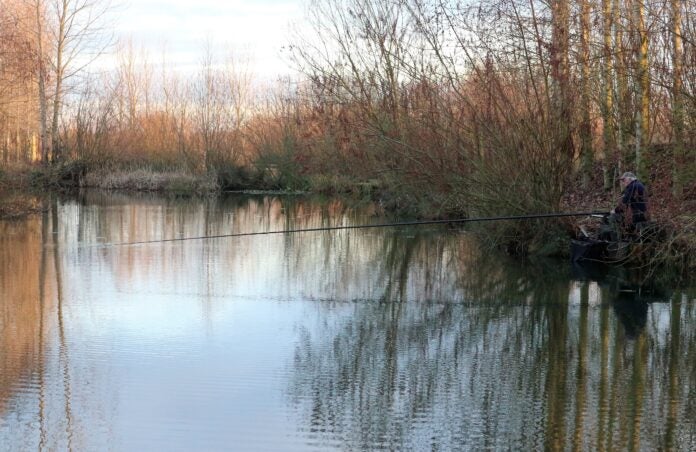BALMY DAYS
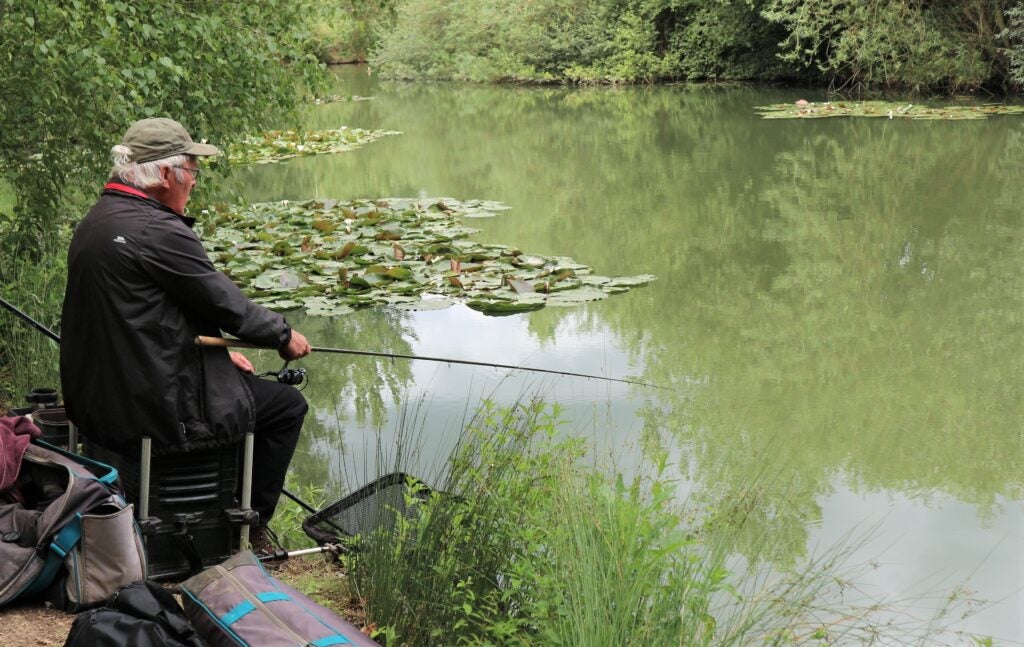

Summer has departed and memories of enjoyable days spent by picturesque lakes, pleasantly dotted with canopies of lilies, are quickly drifting into the hazy past. Different seasons require different tactics. Waggler tackle scores heavily for me on shallow stillwaters when the weather is warm and fish are active, but once the first frosts roll up the method starts to falter. Strange that, because the same tackle continues to work okay on wider canals and rivers. Maybe it’s to do with lake species like crucians, tench and skimmers shutting up shop as it gets colder. When the waggler is working well, I have developed an interesting way of using it on day ticket venues that see lots of pellets. I used to rely on the hemp and caster combination for this type of fishing, but I have modified my approach over recent years. Instead of hemp I use pellets, after discovering a couple of types and sizes that catapult the same distance as casters.
BALANCING ACT
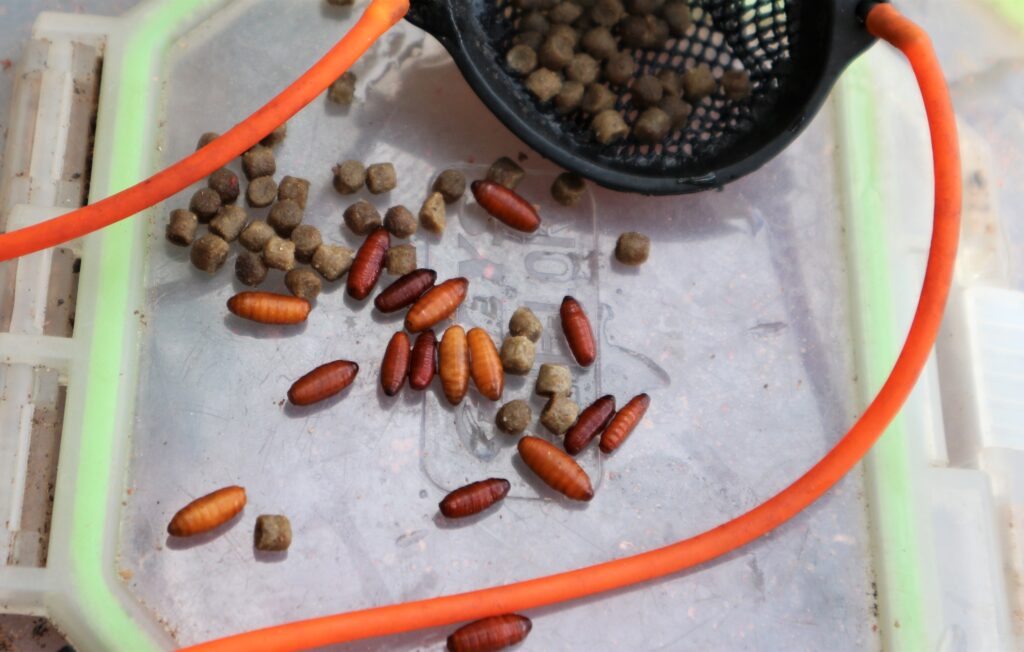

Dynamite Baits offer unusual 3mm gauge feed pellets. Once dampened, these comfortably fire out as far as casters or maggots. The same applies to 2mm Sonu Baits sinking expanders, which swell up to around 3mm after soaking in water. Either bait makes for brilliant loose feed which, when sprayed in regular doses, attracts and holds fish for ages. This is particularly useful when groundbait is limited to small amounts on day ticket venues, or when it’s not allowed at all. In these situations, I often catapult out several helpings of small pellets first, to lay down a light carpet. I then continue loose feeding regular amounts, along with casters or maggots, virtually every cast. Skimmers, tench, rudd, roach and crucians respond well to this, but because this is still only a relatively light amount of food, there’s little fear of pulling in hordes of hungry carp. The latter tend to prefer larger baits, or much bigger helpings when feeding smaller particles.
A BETTER WAY
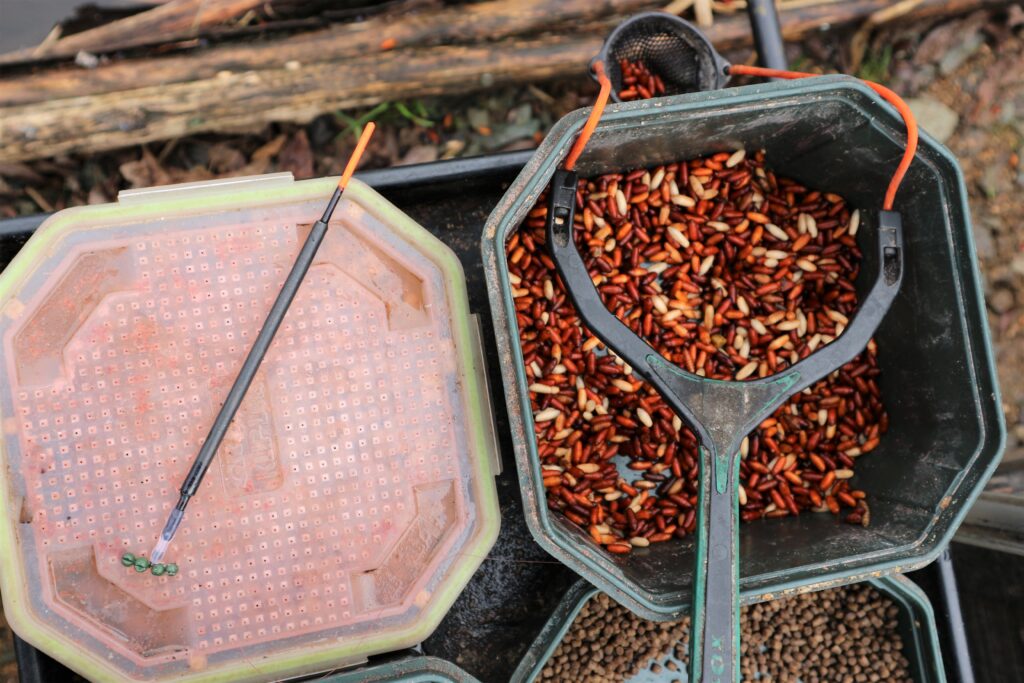

I’ve tried loaded and semi-loaded wagglers for this type of fishing, but can’t get on with them. You need to constantly work hard at feathering the tackle down to prevent it diving deep after the cast. Rubber line stops are mostly used with these floats too. I find these okay with fully loaded pellet wagglers, but not so clever with tackle set up on the bank. They can only be used once, while larger locking shot, particularly Anchor ones, can be utilised many times. At the end of each session, I snip the main line, leaving the weights with the float, ready for next time. Having double locking shot around the base of the waggler stops it from diving or slipping during continuous casting and striking. All I have down the rig is a long hook length attached via a small swivel, with one number 9 or 10 tell-tale shot several inches from the hook. My favourite peacock wagglers all have built-in hollow plastic inserts, which provide better visibility.
GOLD BARS
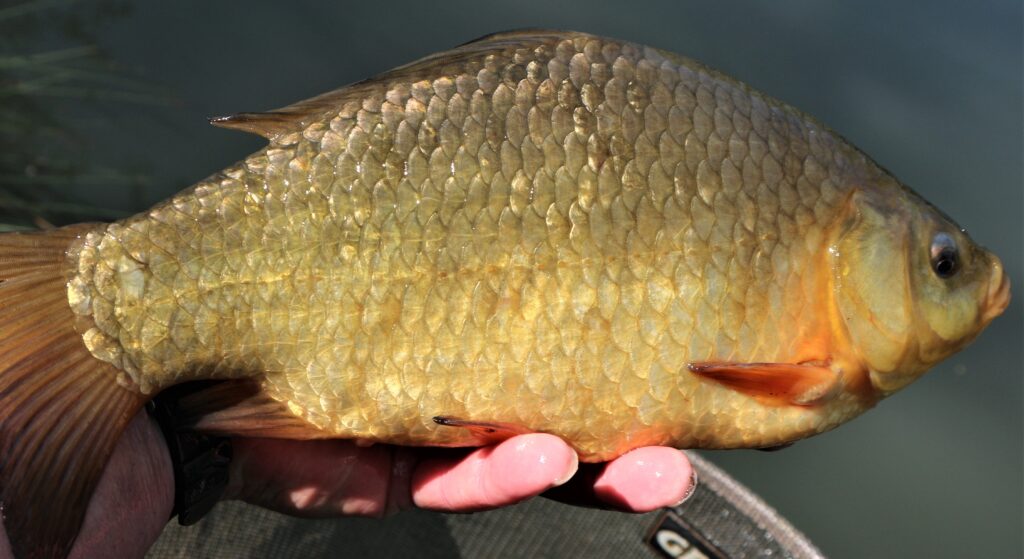

One species in particular that responds well to my summer lake waggler tactics are crucians. These are fussy feeders to say the least, but running line tackle often catches them out. I have caught them on the pole of course, but find the tight feeding associated with that method tends to pull in too many other fish, which bully crucians out of the way. It’s a different story with the waggler, because catapulting loose stuff out creates a bigger feed area for fish to graze over. By working the float around the edges of this, shy-biting crucians often turn up. I love the way these fish mess around with whatever you have on the hook. They often make the float tip dither and dip, before eventually pulling it under. Best baits to use over a bed of small pellets are red maggots, casters, small segments of worm, smaller grains of sweetcorn, or soft 4mm to 6mm pellets. I keep switching hook baits around, which often finds me some bonus gold.
SKIMMER JACKPOT
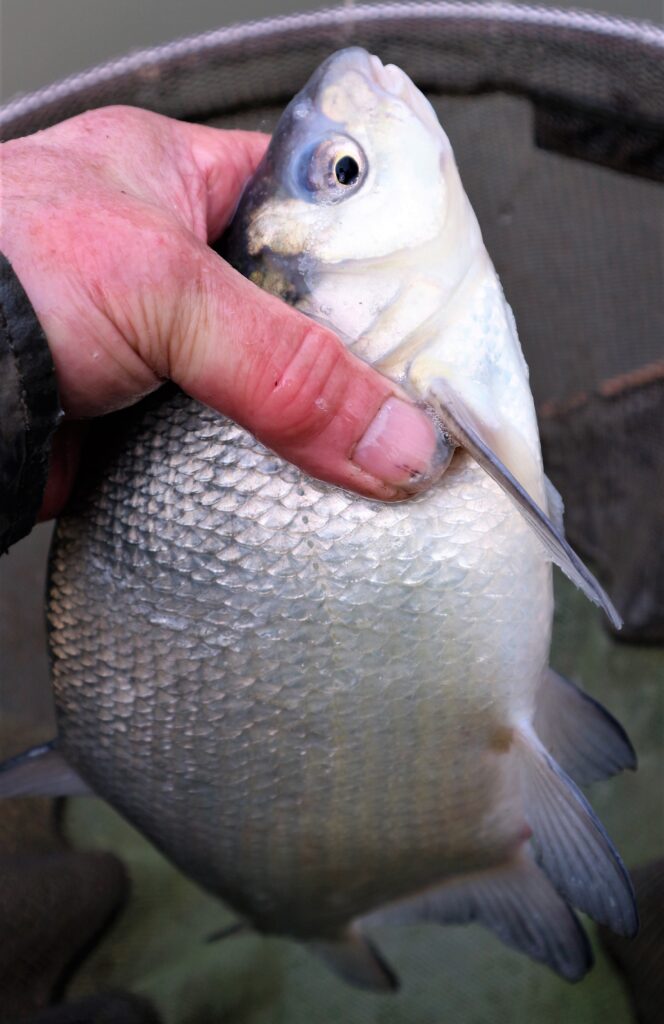

Another species that loves settling over a bed of small pellets are skimmers, which will happily fizz bubbles over a carpet of this bait all day long. The trick is encouraging them to take whatever you have on the hook. A similar menu of offerings, as used for targeting crucians, will normally turn up something they will accept. But it’s not just the bait you need to think about in order to fool skimmers; it’s also to do with how it’s presented. Missed bites and bumped fish signal your end tackle needs to be altered. Sometimes a waggler rig set at exact depth is right, while on other occasions you need to fish 3 or 4 inches over-depth. There are also odd times when a suspended bait works better. It’s a case of experimenting. It can also help to use an insert waggler with a slightly longer and thinner sight tip, which lets bites develop properly when fish are only lightly mouthing what you have on the hook. Don’t ignore cocktails either.
BREAKING BARRIERS
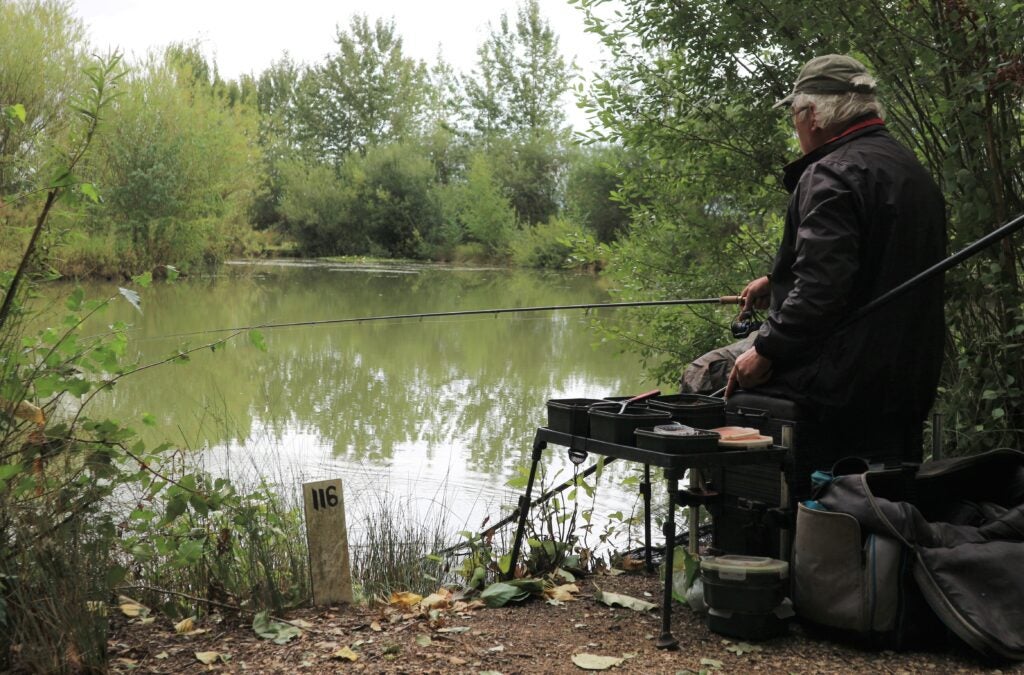

Bigger skimmers and proper bream often show up when I’m using pellets and casters as my main feed with waggler tackle. But I never ignore the often-deadly cocktail factor. We all know about trying a lively worm tipped with a caster when targeting bream, but there are other combinations well worth a go. A guy I used to know who always found the bigger slabs on a moody section of canal, told me the secret was a white maggot tipped with a fluoro pinkie. I don’t know why, but if there was a bream about it worked. I also recall being bite-less for most of a big match, messing about with different maggot colours to combat the boredom. With just a few minutes left, a red and yellow combination resulted in a huge slab, quickly followed by another. I was suddenly in the money! Of course, there’s no rhyme or reason regarding cocktails, or what works one day and not the next, but you will never know if you don’t try.
BAGGING UP
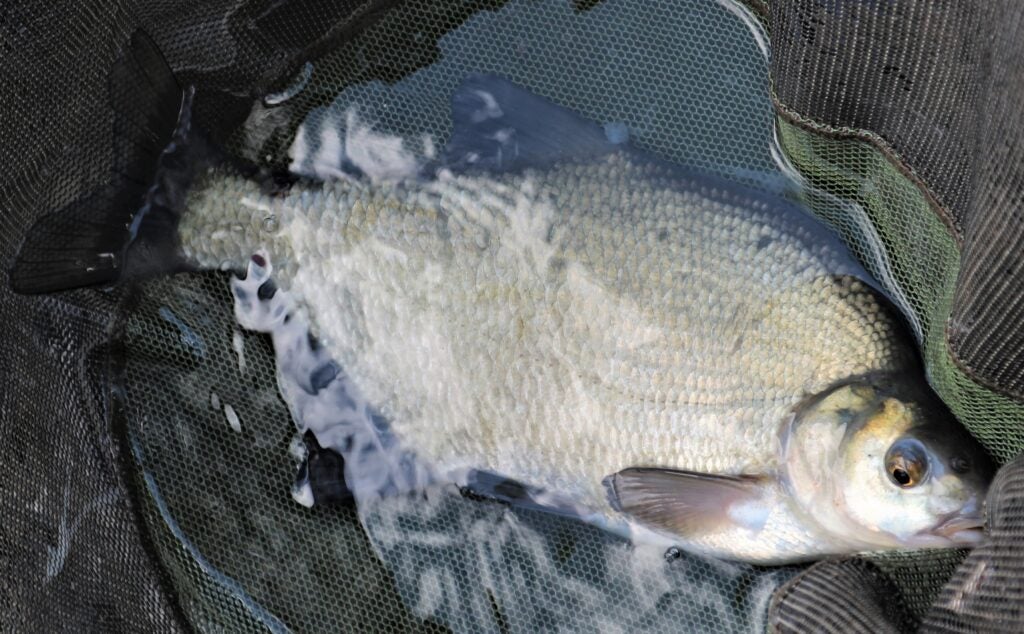

I’m ultra-confident with my pellet and caster waggler attack. It performs particularly well on lake venues that have seen lots of pressure through the summer, where bigger fish are staying well away from busy places and out of reach of pole tackle. I either fish the technique in open water, or towards features like islands, lily beds and overgrown areas. After feeding a bed of micros and a few casters, red maggots on the hook often bring an immediate response. As soon as bites are being missed on these, or small fish become a problem, a switch to single or double caster normally sorts things out. If skimmers are showing well, a segment of worm, or worm and caster cocktail comes next. Another option, if small fish are a nuisance, is to stop putting in casters and to just rely on small pellets as feed. Next hook bait to try is a 4mm soft hooker, which often bypasses the small stuff. If not, a 6mm pellet or piece of sweetcorn does the job.
A GOOD RESULT
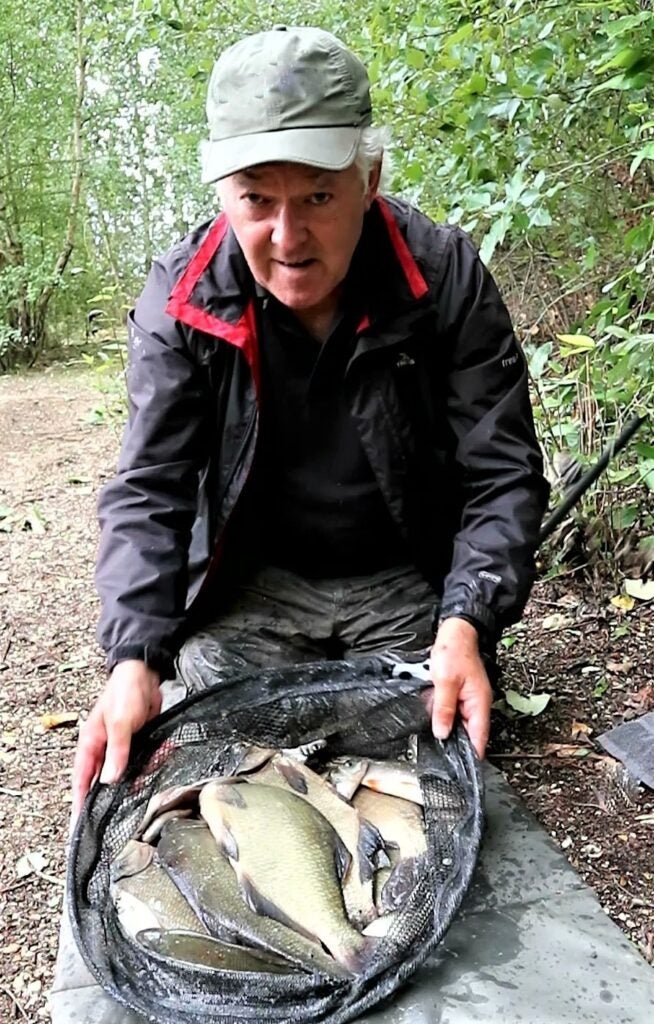

This nice haul was taken early autumn, with summer warmth fading fast and leaves beginning to fall, often a tricky changeover period. It took a bit longer than usual to gain bites on the waggler, signalling that the method was beginning to slow down on this shallow lake. I also had to go easy with the micro pellets because they were tending to pull in carp in the clearer water. But I had a good spell with bigger skimmers as the session progressed, catching most on directly hooked soft 4mm pellets. A single caster on the hook found some chunky hybrids and roach as well. On this occasion, maggots and segments of worm only pulled attention from tiny perch, hence the pellet option being taken to avoid them. Even then, I discovered small perch like krill pellets, so I switched to a sweeter flavour, which the skimmers willingly devoured. With cold weather forecast, it was getting close to the time when pole tackle would take over.
WINTER CALLS
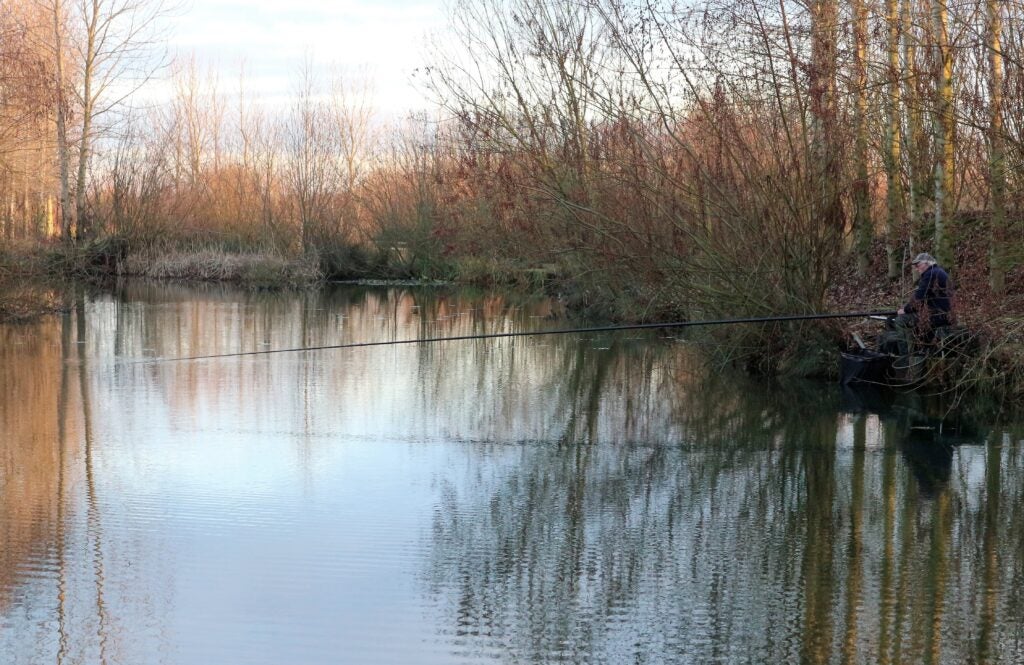

I can make my waggler approach stretch into the autumn, but as the water temperature cools down, it begins to lose its effectiveness. Big silver fish respond less, plus it pulls in lots more carp, or even gets dominated by them. I don’t mind this for the odd bagging session, but if I want to continue targeting roach and skimmers, pole tackle is a better option. This tighter, more precise way of fishing becomes far more superior when winter properly kicks in. Cupping bait in is important to concentrate the fish, topping up with much less loose feed, using a light action catapult for better grouping. Chopped worm also comes in as a superior way of waking swims up, either loose with a few casters and micro pellets, or in small amounts of groundbait, if it’s allowed. That would be dark groundbait, with little or no fishmeal content. The other good thing about switching to pole tackle, is it allows much lighter rigs, which help to gain more bites.
LIGHT APPROACH
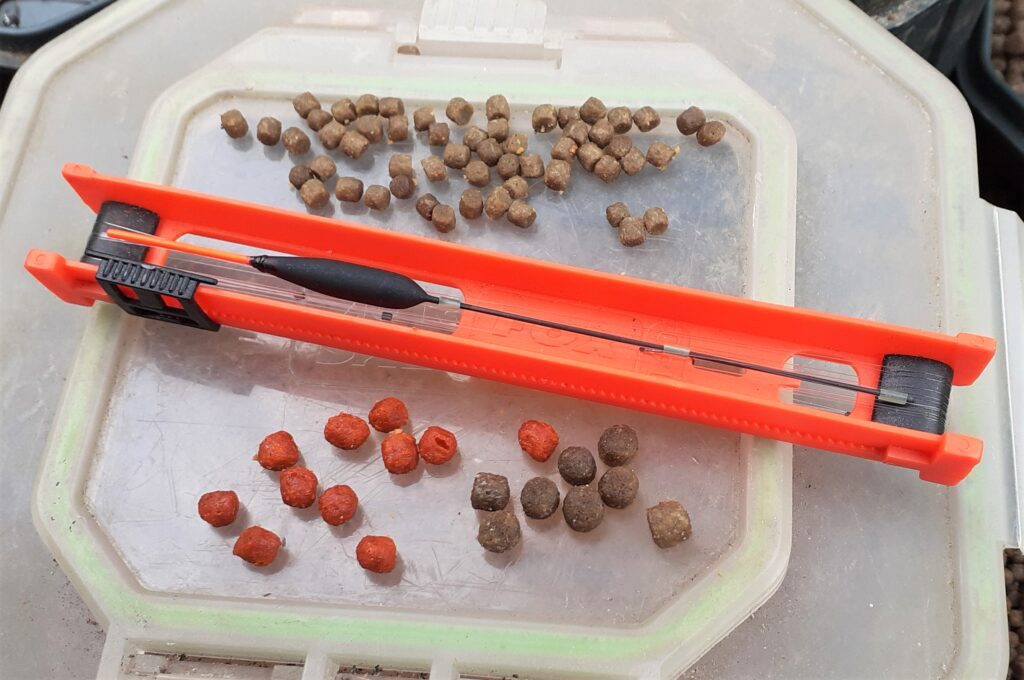

While I’m not afraid to use pellets in the cold, I feed much less of them. I lean towards using expanders, which are softer and easier for lethargic fish to suck in. They also stir up off the bottom when fish are grubbing about, a good way of encouraging more action. I go very gently with pellets to begin with, relying more on chopped worm, maggots, casters, or even pinkies to keep those bites coming. But as soon as any big fish move in, I like to feed a few more pellets, to see if I can wean bigger skimmers and other bonus species onto them. Another good trick here, is to have two long pole feed lines on the go, switching about between them. This way, there is a reserve to fall back on if introducing the wrong bait kills off one area. It also helps having somewhere to switch to if a big fish destroys a feed zone for a while. I find a rig with a 0.10mm hook length handles most fish that turn up, but like to have a lighter 0.08mm one as backup.
FEEL FACTOR
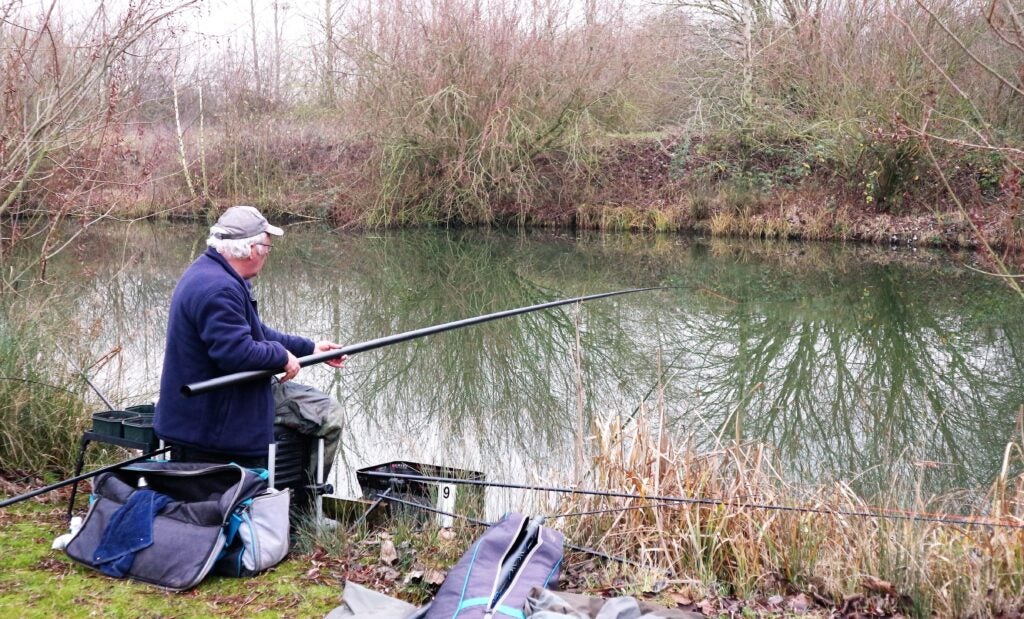

Using finer tackle, combined with a stretchy, not too thick elastic with the pole, provides better feel for what is going on when you hook bigger fish. It’s a much nicer way of fishing, compared to bullying everything in on heavy gear, which probably wouldn’t provide as many bites in the first place. Also, by not hitting into sizeable fish hard, this type of tackle doesn’t spook them into charging off, letting you gently steer them out of the taking zone. By feeding everything virtually on a pinhead, I find I can often keep fish coming all day when using the long pole on shallow, well stocked lakes, even when there’s ice on the surface. This is the first lake at Priory Fishery, which became a firm favourite of mine for bagging silver fish in the depths of winter, sadly closed at the moment. I think the place has been sold and rumour has it a new development into a holiday complex is on the cards. I’m hoping I can get back, whatever happens, soon.
COLD TONIC
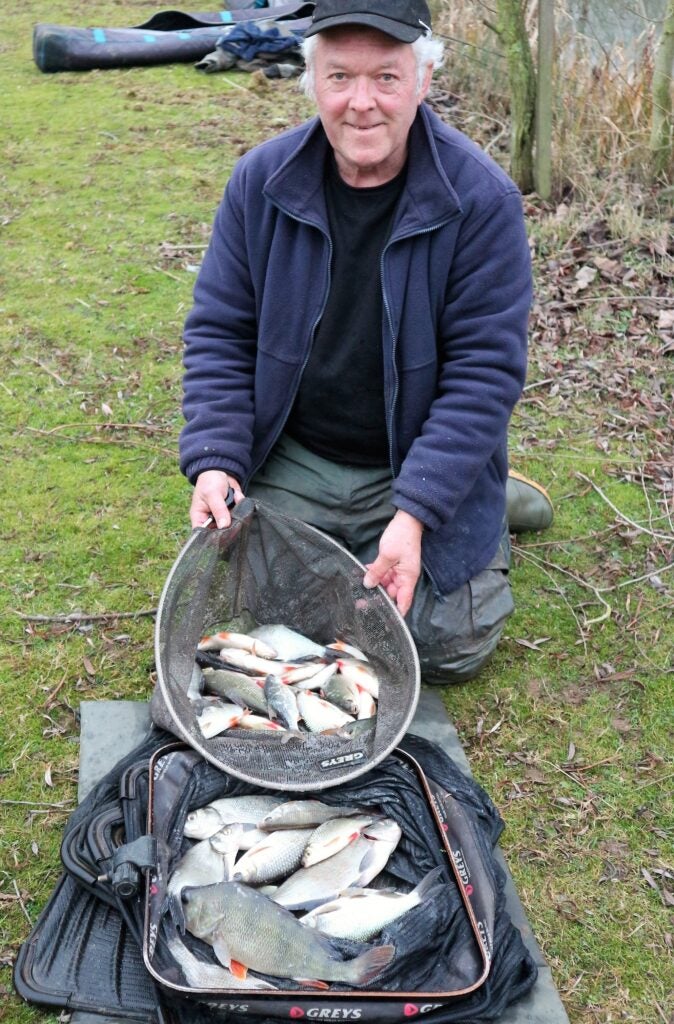

When it’s bitterly cold I mostly leave my waggler rod in my holdall, apart from a few select venues where it continues to score. But generally, the pole comes into its own at winkling out fish during bad weather periods when most anglers are staying at home. It’s all about cupping and loose feeding with great care, precision fishing if you like. You can present baits in ways not possible with running line rigs: lowering, lifting, twitching, dragging, holding dead still, or inching against any tow. All these techniques can produce bonus bites. While I love the freedom of waggler fishing, I know when not to waste my time with it. I like catching fish too much to be a one-trick pony, finding the pole hard to beat when the going is likely to be tough. The feeder or straight bomb rigs are other methods I might consider during extreme times of the year, helping to prevent getting chilled to the bone. I never mind changing tactics, providing I continue to bag up!










